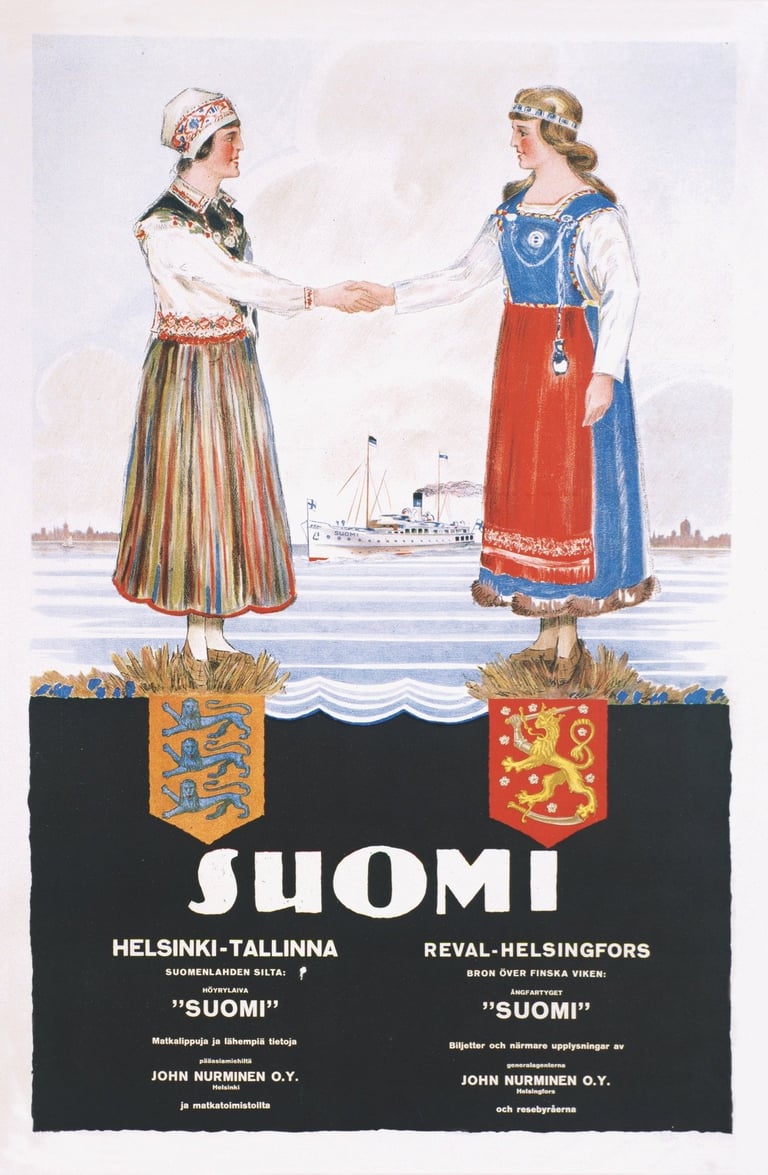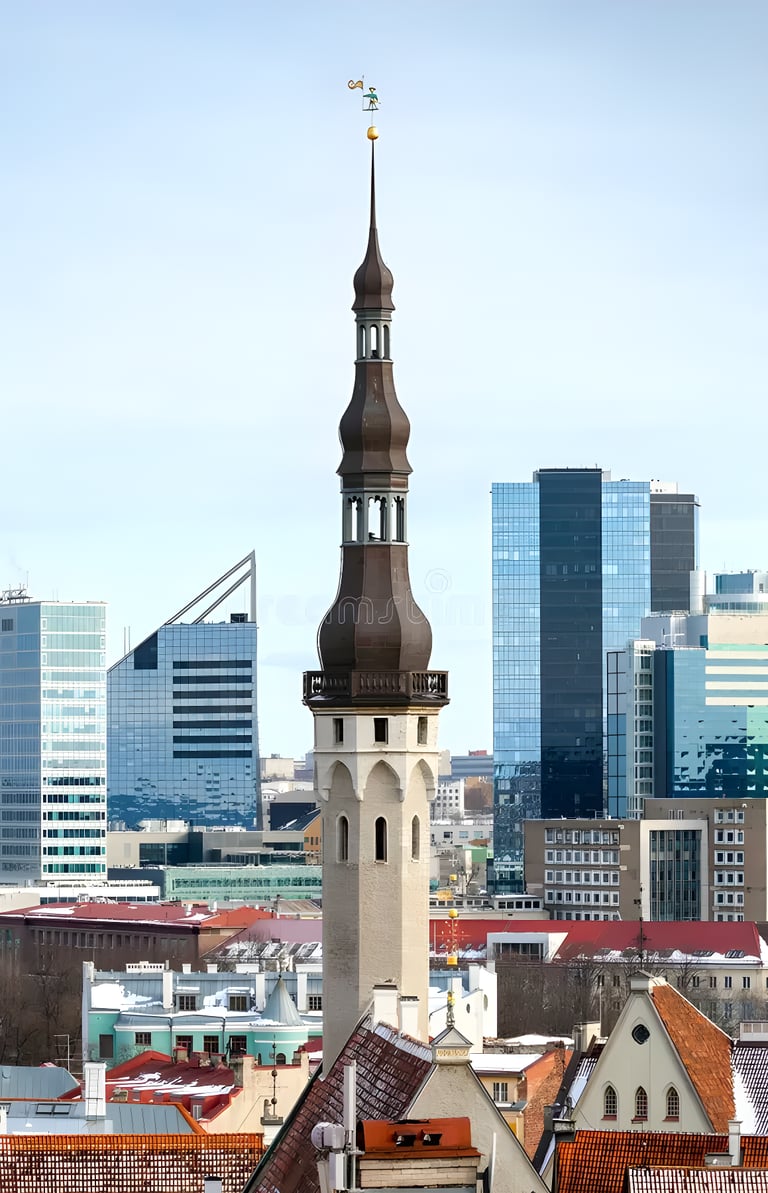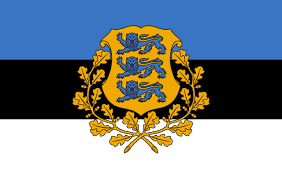ESTONIAN KNOWLEDGE
SATISFY YOUR THIRST FOR
DISCOVER THE TRUE ESTONIA
Estonian, known as "eesti keel" in its native form, is a language that stands out as a fascinating linguistic gem in Europe. It belongs to the Uralic language family, a rare classification that distinguishes it from the Indo-European languages spoken across most of the continent.
Estonian is the official language of Estonia, spoken by approximately 1.1 million people in the country, with smaller communities of speakers in Finland, Sweden, Canada, the United States, and Russia. As one of the three Baltic state languages, Estonian is unique in that it is not related to Latvian or Lithuanian, both of which are Indo-European. Instead, Estonian is closely related to Finnish and more distantly to Hungarian, although the three languages are not mutually intelligible due to centuries of independent evolution.
Estonian’s distinct linguistic features make it an intriguing language to learn. Over the centuries, it has developed independently, incorporating influences from German, Swedish, Russian, and Latin, yet it retains the structural and phonetic characteristics of the Uralic language family.
The history of the Estonian language is deeply tied to national identity and resilience. During periods of foreign rule, particularly under the German, Swedish, and Russian Empires, the language played a crucial role in maintaining Estonian cultural heritage. The Estonian Literary Renaissance of the 19th century was a turning point in the standardization and promotion of Estonian as a literary language, leading to its official recognition in the 20th century. Today, Estonian literature includes works from renowned authors such as Jaan Kross, Anton Hansen Tammsaare, and Doris Kareva, who have shaped the country’s literary landscape.
Five Unique Features of the Estonian Language:
Agglutinative and Fusional Grammar
Estonian is primarily agglutinative, meaning it forms words and grammatical relationships through the addition of suffixes. However, it also has fusional elements, where endings can indicate multiple grammatical functions at once. For example, the word "majades" means "in the houses", combining both plurality and location in a single form.Vowel Harmony and Three-Length Vowel System
Estonian employs vowel harmony, a phonological rule where vowels within a word follow specific patterns. Additionally, Estonian has three distinct vowel lengths—short, long, and overlong—which can change the meaning of a word. For instance:lina (linen)
liina (to the city)
liiina (of the city)
14 Grammatical Cases
Unlike English, which relies on prepositions, Estonian uses 14 grammatical cases to indicate relationships between words. These cases define roles such as location, possession, and direction. For example:maja (house)
majast (from the house)
majasse (into the house)
Flexible Word Order
Estonian typically follows a subject-verb-object (SVO) structure, but word order is flexible, often influenced by emphasis rather than strict grammatical rules. This flexibility allows speakers to shift the focus of a sentence by adjusting word placement.Consistent Pronunciation and Unique Letters
Estonian pronunciation follows relatively consistent spelling rules, making it easier to read aloud compared to English or French. Stress is always placed on the first syllable of a word. The language also features unique letters, such as õ, ä, ö, ü, which add distinct sounds not found in many other European languages.

NATURAL METHOD TO LEARN ESTONIAN
Our language courses are based on the Natural Method, also known as the Natural Approach, developed by linguist Stephen Krashen and language educator Tracy Terrell. This approach focuses on creating an environment that mimics how individuals naturally acquire their first language, emphasizing comprehension, communication, and a stress-free learning experience.
While other language courses rely on rote memorization and drills, a heavy academic approach to grammar, repetitive exercises, expensive and time-consuming formal tutoring sessions or ineffective and shallow phone apps, we will have you gradually build your language skills like a child learning his/her mother tongue.
There are essentially 5 Core Principles in the Natural Method:
Comprehensible Input (i+1)
Learners acquire a language when they are exposed to materials slightly beyond their current level of understanding (represented as i+1). By hearing or reading content they mostly understand, learners can gradually internalize new vocabulary and grammar structures.Focus on Communication
The Natural Method prioritizes fluency and the ability to communicate over grammatical perfection. Errors are seen as a natural part of the learning process and are not heavily penalised, reducing anxiety and encouraging learners to express themselves.Emotional Element
Emotional factors like anxiety, motivation and enjoyment greatly influence language acquisition. When learners are in a relaxed state, achieved by removing the anxiety linked to the pressure to produce perfect grammar, it is easier for them to get through the initial phase which is arguably the hardest and where most give up. It is also proven to be easier for the brain to absorb and retain new information if the learner is actually interested in the language and its underlying culture, which is why he have included extensive cultural insights, historical and modern pop culture elements in our language course.Stages of Language Acquisition
Scholars have identified the following stages in the language acquisition process of young children:Pre-production: The "silent period," where learners focus on listening and understanding without speaking.
Early Production: Learners begin using simple words and phrases.
Speech Emergence: Learners can construct longer sentences and express ideas more freely.
Intermediate Fluency: Learners develop more complex language skills and can engage in meaningful conversations.
Advanced Fluency: Learners achieve near-native proficiency.
The goal of our courses is thus to mimic the natural language acquisition process without overwhelming the learner with long and tedious lessons but ensuring gradual gains so that he/she remains committed to his/her fluency goal.
Meaningful Interaction
Instead of rote memorization of single words and grammar rules over and over, the Natural Method encourages activities that involve real-world communication to help retain information. This is why we have included storytelling and role-playing scenarios that simulate everyday situations, with exercises that allow the learner to understand his/her current level and thus improve upon specific elements.
FREQUENTLY ASKED QUESTIONS
Why learn Estonian?
The top five reasons to learn this language:
It's Fun!
Estonian is a fascinating and unique language that challenges learners with its distinct sounds, complex grammar, and rich vocabulary. Unlike Indo-European languages, it offers a fresh way of thinking about language structures, making it an exciting and rewarding experience.Gain a Deeper Understanding of European History and Culture
Learning Estonian opens the door to a rich and complex history that is often overlooked in mainstream narratives. Estonia has been at the crossroads of Nordic, Germanic, Slavic, and Baltic influences for centuries. From the medieval Hanseatic League and Swedish and Russian rule to the country's fight for independence, Estonia has maintained a distinct cultural and linguistic identity.Estonians Appreciate When You Speak Their Language
Estonians are deeply proud of their language, which was suppressed during various occupations. If you make an effort to speak even a few words, locals will greatly appreciate it. Estonians are generally reserved, but if you attempt to communicate in their language, you'll find that many people warm up instantly and admire your effort. Even a simple "Tere!" (Hello!) or "Aitäh!" (Thank you!) can go a long way in making connections.Joining a Unique Club
Estonian is spoken by just over a million people, making it one of the smallest national languages in Europe. Learning Estonian is like joining an exclusive club—few people outside Estonia can speak it, which makes it a truly special skill. Once you master it, you become part of a unique linguistic world, unlocking access to Estonian literature, music, and cultural traditions that few outsiders truly understand.Visit Estonia for an Affordable and Unforgettable Experience
Estonia is an amazing travel destination, offering stunning landscapes, medieval towns, and a high-tech digital society—all at a relatively affordable cost compared to Western Europe. The capital, Tallinn, is a beautifully preserved medieval city with a vibrant mix of modern innovation and history. Beyond Tallinn, you can explore pristine forests, serene islands, picturesque coastal towns, and untouched national parks.


How difficult is Estonian?
The Foreign Service Institute (FSI) of the United States Department of State classifies Estonian as a Category III language, meaning it is more challenging for native English speakers to learn than most European languages but not as difficult as some East Asian or Arabic languages.
Several factors contribute to the difficulty of learning Estonian for English speakers:
Unfamiliar Vocabulary – Unlike French, German, or Spanish, Estonian does not share many cognates (similar words) with English. Since Estonian is a Finno-Ugric language, its words often have no obvious connections to Indo-European languages. For example:
"Sõber" (friend) – no resemblance to "friend" in English
"Laupäev" (Saturday) – looks completely different from other European equivalents
"Täna" (today) – again, no direct link to familiar words
14 Grammatical Cases – While English uses prepositions (in, at, from, to), Estonian replaces them with grammatical cases, requiring learners to modify nouns depending on their role in the sentence.
Vowel Harmony and Three-Length Vowel System – Estonian has short, long, and overlong vowels, which can completely change a word’s meaning if mispronounced.
Flexible Word Order – Unlike English, Estonian allows words to be rearranged based on emphasis, which can make sentence structure less predictable for beginners.
Our Estonian language course is designed to optimize your study time, allowing you to reach conversational fluency in just 30 days. Instead of memorizing complex grammar rules all at once, our method gradually expands your language skills step by step, ensuring that you can speak, understand, and engage in real-life conversations from day one.


Why can't I improve my Estonian?
To be completely honest, Estonian is not an easy language to learn! Even if you already know another Finno-Ugric language, such as Finnish or Hungarian, it won’t necessarily make mastering Estonian much easier. While there are some grammatical and structural similarities, the differences in vocabulary, pronunciation, and syntax still present a significant challenge for learners.
However, one of the biggest obstacles to learning Estonian isn’t necessarily the grammar—it’s the lack of comprehensive learning resources that effectively bridge the gap between beginner materials and advanced native media. Many learners find themselves stuck after reaching at a beginner level because there aren’t enough books, courses, or accessible contents. Unlike Japanese or Korean, where global pop culture (such as anime or K-dramas) has created a huge international demand for learning the language, Estonian media and culture have not spread worldwide in the same way. As a result, the number of people interested in learning Estonian is much smaller, leading to fewer textbooks, online courses, and language learning tools.
This lack of resources is made worse by the fact that Estonian is not widely spoken outside Estonia, and the Estonian-speaking diaspora is relatively small. While languages like Spanish or French benefit from millions of speakers across multiple continents, Estonian is mainly concentrated in Estonia itself, with smaller communities in Finland, Sweden, and Canada. This geographical limitation makes it even harder for learners to find immersion opportunities, practice partners, and real-world language exposure.
We recognize that the lack of quality Estonian learning resources is a major challenge, and our goal is to bridge the gap by creating new content that helps learners progress beyond the beginner level. Our platform is dedicated to producing practical lessons, cultural insights, and engaging materials that will allow learners to reach fluency step by step. We focus on real-life usage, interactive learning, and gradual skill-building, so you won’t feel lost once you move past basic vocabulary and grammar.
If you have any suggestions for future lessons or articles, feel free to send them to info@learnestonian.org—we’d love to hear from you and help tailor our content to fit your learning needs!


Is Estonian similar to other languages?
Estonian belongs to the Uralic language family, which also includes Finnish, Hungarian, and several lesser-known languages spoken across northern Eurasia, such as Sami, Udmurt, Komi, and Mari. Unlike its Baltic neighbors, Latvian and Lithuanian, which are Indo-European, Estonian has a completely different linguistic ancestry. This makes it one of the few non-Indo-European languages in Europe, along with Finnish and Hungarian.
Despite its geographic location in Northern Europe, Estonian is not related to the Slavic, Germanic, or Baltic languages spoken around it. Instead, its closest linguistic relative is Finnish, with which it shares a large amount of vocabulary and grammatical structures. However, the two languages are not mutually intelligible, as they have evolved separately for centuries. More distantly, Estonian is related to Hungarian, though their similarities are primarily structural rather than lexical, as Hungarian has developed independently in Central Europe, while Estonian has remained in the Baltic region.
Interestingly, the closest linguistic relatives to Estonian beyond Finnish are found much farther away in Russia, in regions such as the Volga and Ural Mountains. Languages like Komi, Mari, and Udmurt share common ancestral features with Estonian, although due to centuries of divergence, these similarities are no longer immediately obvious.
Although Estonian maintains its Uralic roots, centuries of contact with Indo-European languages have introduced a significant number of loanwords into its vocabulary. Estonian has borrowed from:
Germanic languages (Low German, High German, Swedish, English) – Due to historical trade and rule by German-speaking elites, many German words have been adopted, especially in commerce, law, and administration.
"Ratsionaalne" (rational) – from German "rational"
"Aken" (window) – from Middle Low German "oken"
Slavic languages (Russian, Polish) – Influence from Russian has introduced many everyday words, particularly during the Soviet era.
"Sadam" (port) – from Russian "сад" (sad)
"Pudel" (bottle) – from Polish "butelka"
Finnish – Due to the close linguistic relationship, Finnish has influenced Estonian vocabulary and pronunciation, particularly in modern times.
Latin and French – Many scientific, cultural, and academic terms come from these languages, as in most European languages.


What’s the fastest way to become fluent in Estonian?
These are 5 proven methods that we have developed as language learners (not only as teachers!) that will help you achieve complete mastery of any language:
1. Immerse Yourself Completely
Surround Yourself: Change the language of your phone, computer, tv, console, news sources, radio stations, song playlists and streaming apps to the language you want to learn.
Engaging Content: Listen to native music, watch original movies, learn about the culture and history of the country on Youtube. This will help you stay motivated and reduce the initial frustration.
Make Mistakes: Travel to the country where the language is spoken and don't be afraid to engage with the locals. People will be amazed at your efforts to learn their language.
2. Focus on the Most Useful Words and Phrases
Study Efficiency: Learn the top 2,000 words in the language, as they often cover 80-90% of everyday conversations. Learning takes time but that doesn't mean it has to take very long to see results.
Real Conversations: Start by practising with common phrases you'll actually use in real-life situations, like greetings, ordering food, asking for directions, etc.
3. Use Memorization Techniques
Spaced Repetition: Our Courses are based on spaced spaced repetition systems (SRS) to help you memorize words and grammar in the long term and with miminal effort by showing them to you in progression.
Mnemonic Devices: trick your brain and speed up the learning process by trying to think of an example or "story" for each new word / expression you struggle to remember.
4. Learn the Language based on the Context
Practice Makes Perfect: Remember that your grammar doesn't have to be perfect as long as you can be understood! There is no shame in using simple phrases to get you point across.
Shadowing Technique: Repeat in your head after native speakers in real-time while listening or watching videos with original subtitles to improve your comprehension.
5. Consistency is Everything
Daily Practice: Even just 30 minutes a day is more effective than sporadic, long day study sessions. Take breaks often when reading and always have fun to increase productivity.
Compound Results: Small, achievable goals like reading 5 pages daily, or even just watching a movie or playing a videogame every evening produce results over time if you don't see them immediately.




EXPAND YOUR KNOWLEDGE
Download our complete Estonian language course below to learn Estonian in 30 days and never be at a loss for words!
You will receive not only all the contents available on our website in a convenient pdf or epub formats but also additional contents, including bonus Vocabulary, more Grammar rules and exclusive cultural insights with additional vocabulary you won't in any other textbook.
The additional vocabulary includes 200 different topics and more than 15.000 of the most important words, including specific categories like sports, religion, business, professions, nationalities, politics, slang, anatomy, medicine, nature, animals, etc., to allow to speak about any immaginable topic with confidence.
MORE LANGUAGE COURSES
Have you already mastered Estonian?
Congratulations on reaching this milestone! Your feedback is invaluable to us as we work to improve our lessons and create fresh, engaging content. Share your thoughts with us at info@learnestonian.org
Discover the languages below and explore high-quality, free learning resources we recommend. Each offers a distinct path to broaden your cultural and linguistic understanding:
Learn Persian (Farsi): Immerse yourself in the poetic masterpieces of Hafez and Rumi, whose verses reflect the beauty of love, spirituality, and nature. Explore the rich literary tradition that gave birth to some of the world's most evocative poetry.
Learn Arabic: Dive into the profound poetry of the Arab world, from pre-Islamic qasidas to the romantic and philosophical works of Al-Mutanabbi. Discover the art of rhythm and eloquence in one of the world's most poetic languages.
Learn Georgian: Explore the lyrical heritage of Georgian poetry, from the epic The Knight in the Panther’s Skin by Shota Rustaveli to contemporary poetic expressions inspired by Georgia's dramatic landscapes and deep spirituality.
Learn Ukrainian: Uncover Ukraine’s poetic soul through the works of Taras Shevchenko, Lesya Ukrainka, and Ivan Franko, whose verses reflect the resilience, beauty, and cultural identity of the Ukrainian people.
Learn Japanese: Experience the delicate art of haiku and tanka, capturing fleeting moments in nature and human emotion, crafted by masters like Matsuo Bashō and Yosa Buson in the intricate Japanese language.
Learn Armenian: Delve into the poetic traditions of Armenia, from the medieval laments of Gregory of Narek to modern nationalistic and romantic poetry by Paruyr Sevak, celebrating resilience and cultural identity.
Learn Russian: Explore the profound depths of Russian poetry, from Pushkin’s romantic verses to Anna Akhmatova’s poignant works and Vladimir Mayakovsky’s revolutionary spirit, reflecting Russia’s diverse cultural epochs.
Learn Italian: Relish the melodic beauty of Dante’s Divine Comedy, Petrarch’s sonnets, and modern Italian poetry, whose themes of love, faith, and identity resonate through centuries.
Learn Swahili: Discover the poetic traditions of East Africa through utendi and mashairi, forms of Swahili poetry that celebrate history, culture, and the rhythms of everyday life.
Learn Chinese: Journey through China’s poetic legacy, from the classical verses of Li Bai and Du Fu to the romantic imagery of Tang and Song dynasty poets, painting vivid pictures of life and nature.
Learn Turkish: Dive into Turkish poetic traditions, from the mystical works of Yunus Emre to the romantic and philosophical verses of Nazım Hikmet, reflecting Turkey’s cultural crossroads.
Learn French: Celebrate the elegance of French poetry, from Baudelaire’s evocative imagery to Rimbaud’s innovative forms and Prévert’s charming simplicity, all flowing through this lyrical language.
Learn Greek: Reconnect with the origins of Western poetic traditions, from Homer’s epic Iliad and Odyssey to Sappho’s lyrical explorations of love and longing in the timeless Greek language.
Learn Korean: Experience the poetic richness of Korean sijo and modern poetry, expressing themes of nature, emotion, and social reflection, rooted in Korea’s deep literary tradition.
Learn Polish: Explore Polish poetry, from the works of Nobel laureates Wisława Szymborska and Czesław Miłosz to the romantic imagery of Adam Mickiewicz, capturing Poland’s historical and cultural essence.
Learn Spanish: Immerse yourself in the poetic brilliance of Spanish literature, from Federico García Lorca’s evocative imagery to Pablo Neruda’s odes, painting vivid pictures of love and life.
Learn Hungarian: Discover Hungary’s rich poetic tradition, from the nationalistic verses of Sándor Petőfi to the hauntingly beautiful works of Attila József, woven with deep emotion and insight.
Learn German: Delve into German poetry, from Goethe’s classical brilliance to Rainer Maria Rilke’s introspective verses, and the innovative expressions of modern poets in this powerful language.
Learn Uzbek: Uncover the poetic heritage of Uzbekistan, from the timeless ghazals of Alisher Navoi to modern poetic expressions celebrating Central Asia’s vibrant culture and history.
Learn Romanian: Dive into the works of Mihai Eminescu, Romania’s national poet, whose romantic and philosophical verses evoke themes of love, nature, and identity in this beautiful language.
Learn Lithuanian: Explore the folk-inspired poetic traditions of Lithuania, with themes of nature and mythology woven into verses that capture the Baltic spirit and heritage.
Learn Modern Hebrew: Experience the poetic revival of Modern Hebrew through the works of Hayim Nahman Bialik and Yehuda Amichai, whose verses bridge biblical traditions and contemporary themes.
Learn Estonian: Admire Estonian poetry’s deep connection with nature and folklore, from traditional runic songs to modern poetic explorations of national identity.
Learn Finnish: Discover Finland’s poetic legacy, from the epic Kalevala to the lyrical works of modern poets, celebrating the beauty of nature and the resilience of the human spirit.
Learn Albanian: Explore the lyrical expressions of Albanian poets, from medieval folk ballads to the modern verses of Ismail Kadare, reflecting the history and culture of Albania.
Learn Czech: Dive into Czech poetic traditions, from the romantic verses of Karel Hynek Mácha to the surreal and experimental works of modern poets like Vítězslav Nezval.
Learn Slovene: Experience Slovenia’s rich poetic heritage, from the lyrical works of France Prešeren to modern verses inspired by the country’s stunning landscapes and cultural identity.
Learn Slovak: Explore Slovak poetry, with themes of love, patriotism, and nature woven into works by Andrej Sládkovič and Milan Rúfus, reflecting Slovakia’s cultural essence.
Learn Danish: Admire Danish poetry’s connection with nature and history, from medieval ballads to modern poetic expressions by authors like Inger Christensen.
Learn Norwegian: Experience the haunting beauty of Norwegian poetry, from the nature-inspired verses of Henrik Wergeland to the introspective works of modern poets.
Learn Mongolian: Discover Mongolia’s rich oral poetic traditions, from epic tales like The Secret History of the Mongols to modern expressions of national pride and heritage.
Learn Wolof: Experience the poetic traditions of Senegal, with verses capturing themes of heritage, resilience, and spirituality, deeply tied to its oral literature.
Learn Kazakh: Explore the poetic spirit of the Kazakh steppe, from the epic tales of zhyrau poets to the lyrical expressions of contemporary Kazakh authors.
Learn Afrikaans: Connect with the poetic voices of South Africa, from folk-inspired verses to the works of modern Afrikaans poets exploring themes of identity and heritage.
Learn Inuit: Immerse yourself in the oral poetic traditions of the Inuit, celebrating the Arctic’s landscapes, survival, and community through evocative imagery.
Learn Tigrinya: Discover the lyrical beauty of Tigrinya poetry, where the rich oral traditions of Eritrea and Ethiopia intertwine with themes of love, resistance, and cultural identity, echoing through timeless proverbs and modern verse.
Learn Latvian: Step into the world of Latvian poetry, where the ancient dainas—short, rhythmic folk verses—capture the soul of Latvia’s landscapes, traditions, and deep-rooted connection to nature and folklore.
Learn Bulgarian: Experience the poetic depth of Bulgarian literature, from medieval epic ballads to the revolutionary verses of national awakening, reflecting a history of resilience, passion, and the enduring spirit of the Balkans.
Dive into this world of creativity and emotion, and let the power of poetry inspire your own journey of exploration and self-expression.




